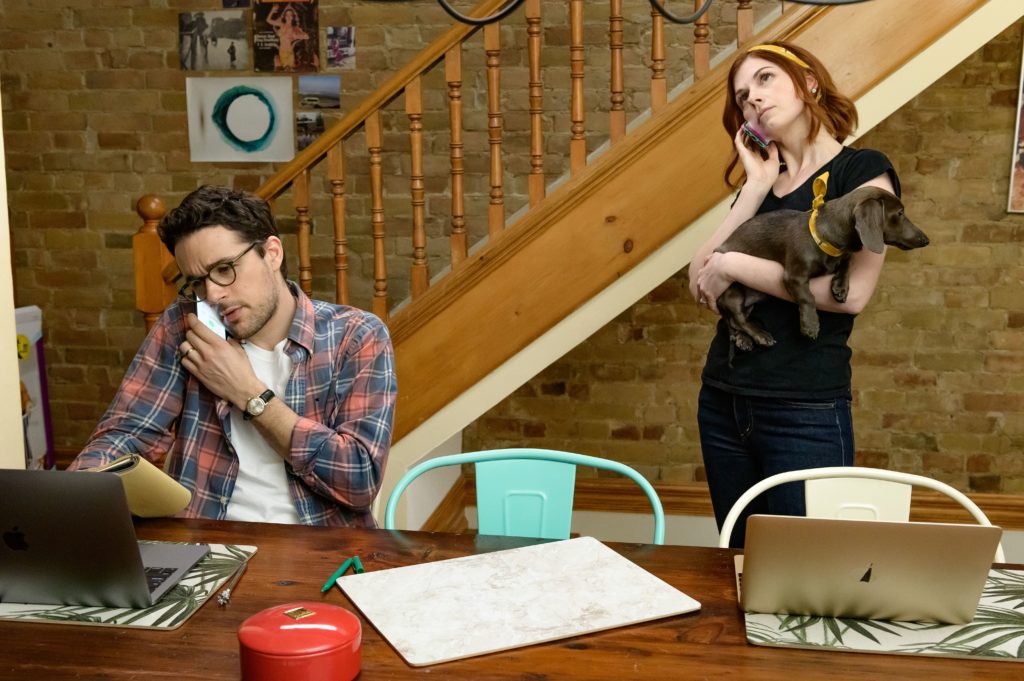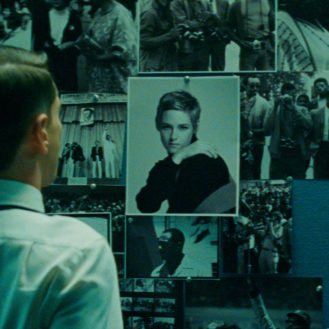By: Sky Wylie
I have been a huge fan of Wendy Litner’s hilarious digital series How to Buy a Baby since the success of the first season. My husband and I were a couple of years into the agony of fertility problems, and I was looking for a bit of an escape. It was so refreshing to watch Jane (played brilliantly by Meghan Heffern) and Charlie (Marc Bendavid) navigate the same crazy world we had found ourselves in. The show put a darkly funny yet heartbreakingly honest spin on the situation.
When season 2 was released on CBC Gem on August 23, I jumped right back into the lives of Jane and Charlie as they navigate the wild and wacky world of infertility.
I was thrilled to be able to chat with the series’ creator Wendy Litner about everything How to Buy a Baby.
Sky Wylie: When we last left Jane and Charlie, they had just received a very difficult phone call. Will season two leaves off right where season one ended?
Wendy Litner: The second season finds Jane and Charlie in the throes of trying to adopt. Whereas season one followed them through a cycle of in vitro fertilization, season two fast forwards a year in their life where they have already decided to no longer try for a biological child and are instead hoping to finally become parents through adoption.
SW: How much of the show comes from your real-life experiences?
WL: My husband and I went through many rounds of various infertility treatments and then adoption, so the general backbone of the show is based on this lived experience and is coloured with my own thoughts and feelings (and neuroses!) about living through the heartbreak and humour of not being able to make a baby the fun way.
There are some scenes that are lifted from real life (i.e.getting a terrifying phone call in the middle of the night), and some are based on fantasy in that I got to write what I wish I would have done or said to someone (i.e. telling a pregnant woman that I too am pregnant). While Jane and Charlie began as sketches of my husband and I, our incredible actors, Meghan Heffern and Marc Bendavid, brought so much of their own hearts to the roles and made the characters their own. Our incredible director too Adriana Maggs, brought her own incredible perspective that changed and elevated what was on the page even more.
The extended characters to be sure are true works of fiction: the infertility doctors and social workers in the show are heightened and humourless. Jane and Charlie’s friends and family often say the wrong thing, but in actuality, the professionals we worked with were incredibly kind and our loved ones were incredibly supportive.
SW: I just have to know what is the story behind the plushies that we see in your title cards?
WL: Ovi and Tess, as we affectionately called our plush ovary and testicle, were generously donated by a company called I Heart Guts, who I am just in love with!
At the fertility clinic that treated me, many of the nurses had uterus lapel pins with “womb service” on them and, of course, I love a good pun and fell in love with all the guts! Going through infertility treatments and adoption took a lot of the romance out trying to become parents. I just loved how I Heart Guts brings some of that whimsy back.
In season one we used an ovary and testicle as these are part of the actual, biological components necessary to make a baby. Jane and Charlie were two halves of a whole trying to make a baby in a clinical way, but I wanted to show that they haven’t lost their sense of humour or lost sight of the reasons they wanted to become parents together. In season two, we add a third gut: a stuffed heart. To me, this symbolized that it is no longer just Jane and Charlie building their family alone. It is no longer their biology. A lot of adoptive parents say their child didn’t grow in their belly but in their heart and that is what Jane and Charlie will give any future child: all of their hearts. I also wanted to represent and honour the birth mother and birth father’s hearts, which will forever beat inside any precious child for whom they have made an adoption plan.
This seems like a long winded answer about symbolism and stuffies. Maybe a shorter answer is “I thought they were cute”.
SW: The world that Jane and Charlie live in seems to be an over-exaggerated version of our world. What was the motivation behind this?
WL: I love awkward moments, I thrive on them, and perhaps I tend to exaggerate them when I write them. At times, going through infertility treatments and trying to adopt felt like living in the upside-down. The process for both can be surreal at times and it is hard not to become consumed by them. Life began to take on an exaggerated quality. For example, it felt like every single person I saw out and about, even the men, was pregnant. I know the entire population wasn’t expecting (or were they!?!?) but it really, really, felt this way.
So many times, I felt like it was my husband and I against the world and channelling that in the writing has made the world around Jane and Charlie somewhat exaggerated. I also think exaggerating certain themes or character traits helps to really make a point and drive home the comedy.
SW: This show has been a breath of fresh air for so many couples going through their own fertility struggles, but what do you hope that your more fertile viewers take away from the show?
WL: For those not touched by infertility or adoption, I hope the series shares a perspective about the complexities of infertility and adoption. The desire to be a parent, outside of the natural way, is often met with judgment. Infertility is a disease according to the World Health Organization, but the treatment of it is not always met with compassion.
I hope How to Buy a Baby puts a human face on the pain and heartbreak of wanting to love a child and erodes the stigma around the many different paths to parenthood. These are incredibly complex topics that can’t really be distilled in a hashtag. This show is certainly about infertility and trying to adopt, but I think ultimately it is about love. I hope fertile viewers can relate to the love: love for your partner who holds your pain when you can’t, all the love you hope to share with a child. What do you do with all that love?
SW: What difficulties do you face in trying to portray such an often stigmatized topic in such a comedic way?
WL: There are always going to be topics some people think are off-limits, and there are certainly always going to be topics people think shouldn’t be handled comedically. I remember watching Tig Notaro performs “Live,” her groundbreaking set about breast cancer, and thinking if she can laugh about losing her breasts, surely I can laugh at my inability to have a baby. Seeing Life is Beautiful when I was younger – a comedy about the Holocaust (the Holocaust!) – was also transformative. How could anyone be so strong? It was so deeply, deeply human.
Every infertility story is different, and every adoption story is unique. I try and be respectful of other people’s perspectives and experiences and recognize that you can’t be all things to all people. Thankfully, there is room for all our stories and me telling what I felt like as a hopeful adoptive parent certainly doesn’t preclude others who want to tell their own story.
How to Buy a Baby, seasons 1 and 2, are both available to stream on CBC Gem.
**********
Do You Tweet? Follow These Tweeple:
Sky Wylie: @SkyBaby5








Be the first to comment